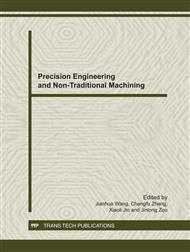p.427
p.432
p.437
p.442
p.447
p.452
p.456
p.461
p.469
Design of Silicon Based on Bio-Electrodes for Deep Brain Stimulation
Abstract:
In the treatment of nerve disorders, bio-electrodes are used to be implanted into the patients’ deep brain to provide electrical stimulation to improve the symptom and deep brain stimulation has been regarded as the most effective method to treat nerve disorders in clinic medicine. This paper presented a simple structure of bio-electrode implanted in deep brain for long term stimulation. Based on a 3D finite element modeling of electrostatics for the electrode, the influence of the electrode dimensions on the electric field distribution was discussed. The dimension and structure of the electrode was determined on the volume of tissue activated by deep brain stimulation.
Info:
Periodical:
Pages:
447-451
Citation:
Online since:
November 2011
Authors:
Keywords:
Price:
Сopyright:
© 2012 Trans Tech Publications Ltd. All Rights Reserved
Share:
Citation:


